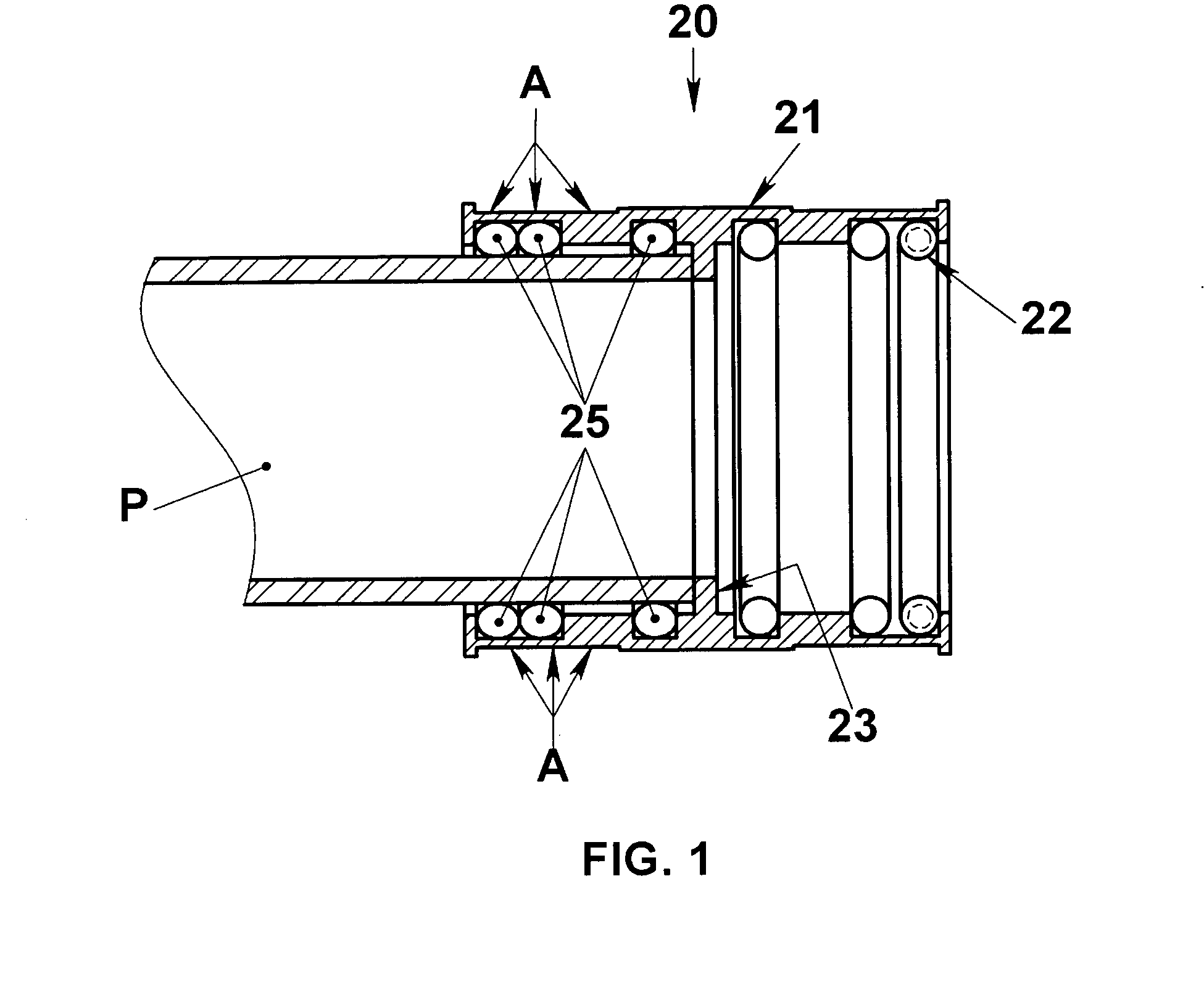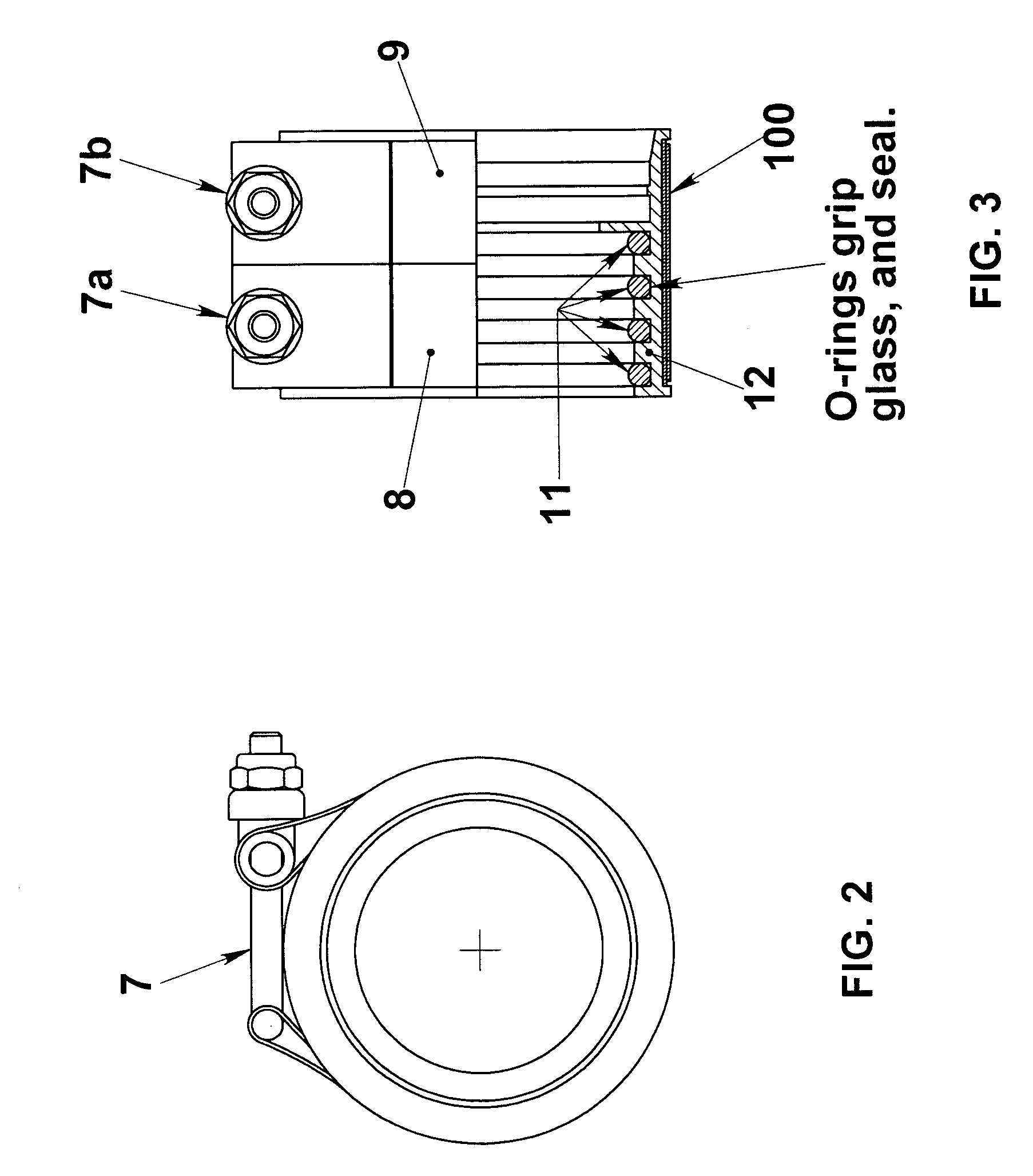Corrosion-resistant coupling means and methods for using same
a coupling means and corrosion-resistant technology, applied in the direction of hose connections, fluid pressure sealing joints, sleeves/socket joints, etc., can solve the problems of glass piping being extremely brittle, incapable of handling many corrosives, and failure of glass piping
- Summary
- Abstract
- Description
- Claims
- Application Information
AI Technical Summary
Benefits of technology
Problems solved by technology
Method used
Image
Examples
Embodiment Construction
[0036]Referring to the drawings in detail, FIG. 1 shows the invention's coupling device 20 for coupling sections of piping. Side walls 21 and retaining stops 23 of the device comprise Teflon or similar flexible, non-reactive material. Piping (“P”) is inserted into either end of the device. (Here, insertion into one end is shown for simplicity of illustration.) The end of the pipe is seated firmly and snugly against the retaining stop 23 and, when held in this snug position (described subsequently), forms a smooth inner bore for ease of drainage and cleanout.
[0037]The sides of the pipe end are in firm and snug contact with a series of O-rings 22 which form primary and secondary seals when pressure is applied as described herein. In the embodiment shown in FIG. 1, the pipe end contacts three O-rings (per side of the device), one near the center of the device, and one more remote from the center. Of course other configurations are contemplated, including but not limited to one remote r...
PUM
 Login to View More
Login to View More Abstract
Description
Claims
Application Information
 Login to View More
Login to View More - R&D
- Intellectual Property
- Life Sciences
- Materials
- Tech Scout
- Unparalleled Data Quality
- Higher Quality Content
- 60% Fewer Hallucinations
Browse by: Latest US Patents, China's latest patents, Technical Efficacy Thesaurus, Application Domain, Technology Topic, Popular Technical Reports.
© 2025 PatSnap. All rights reserved.Legal|Privacy policy|Modern Slavery Act Transparency Statement|Sitemap|About US| Contact US: help@patsnap.com



